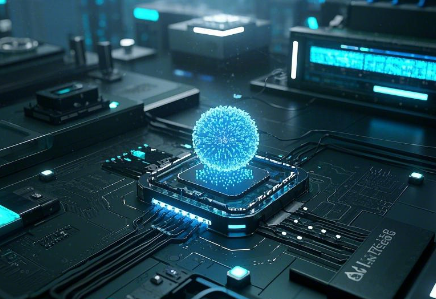The Role of Nanomaterials in Revolutionizing Miniaturized Circuit Performance
I. Introduction
In the ever - evolving landscape of modern technology, the drive for smaller, faster, and more efficient electronic devices has been relentless. This pursuit has led to a significant focus on miniaturized circuits, which are the backbone of everything from smartphones and laptops to advanced medical devices and aerospace electronics. At the heart of this revolution in miniaturized circuit performance are nanomaterials. Nanomaterials, with their unique properties at the nanoscale level (1 - 100 nanometers), have emerged as game - changers, enabling the development of circuits that are not only smaller in size but also exhibit enhanced electrical, thermal, and mec
hanial characteristics. This article explores in - depth the role of nanomaterials in revolutionizing miniaturized circuit performance, covering their properties, applications, challenges, and future prospects.
II. Understanding Nanomaterials
A. Definition and Classification
Nanomaterials are materials that have at least one dimension in the nanometer range. They can be classified into several categories, including nanoparticles, nanowires, nanotubes, and nanofilms. Nanoparticles are tiny particles with diameters in the nanometer scale. For example, gold nanoparticles, which are widely studied, have unique optical and electrical properties due to their small size. Nanowires are long, thin structures with diameters in the nanoscale, often made of materials like silicon or carbon. Carbon nanotubes are cylindrical structures made of carbon atoms, and they can be either single - walled or multi - walled. Nanofilms are ultra - thin layers of materials deposited on substrates.

Quantum Size Effects
At the nanoscale, quantum size effects become prominent. As the size of a material is reduced to the nanometer range, the energy levels of electrons become quantized. This leads to unique electrical and optical properties. For instance, semiconductor nanoparticles can exhibit size - dependent bandgaps. A smaller nanoparticle will have a larger bandgap compared to a bulk semiconductor of the same material. This property is exploited in applications such as quantum dots, which are used in displays to produce highly saturated colors.
High Surface - to - Volume Ratio
Nanomaterials have an extremely high surface - to - volume ratio. For example, a nanoparticle with a diameter of 10 nanometers has a significantly larger surface area per unit volume compared to a larger particle of the same material. This high surface area makes nanomaterials highly reactive. In the context of miniaturized circuits, this property can be harnessed for better adsorption and catalysis. For example, in sensors, nanomaterials can detect trace amounts of substances more efficiently due to their large surface area available for interaction.
Enhanced Mechanical Properties
Some nanomaterials, like carbon nanotubes, possess exceptional mechanical strength. Carbon nanotubes have a tensile strength many times greater than that of steel, while being much lighter. This property makes them ideal for use in miniaturized circuits where mechanical stability is crucial, such as in flexible electronics. They can provide structural support while allowing the circuit to bend and stretch without significant damage to the electrical components.
III. Applications of Nanomaterials in Miniaturized Circuits
A. Conductive Nanomaterials in Interconnects
Nanowires as Interconnects
In miniaturized circuits, reducing the resistance of interconnects is crucial for improving the overall performance. Nanowires, especially those made of highly conductive materials like copper or silver, offer a promising solution. Copper nanowires can be used as interconnects in integrated circuits. Their small diameter allows for more compact wiring, reducing the overall size of the circuit. Additionally, due to their high aspect ratio (length to diameter ratio), they can be arranged in a more efficient manner, minimizing signal delay. Research has shown that using copper nanowires in interconnects can lead to a significant reduction in power consumption and an increase in the speed of signal transmission in miniaturized circuits.
Carbon Nanotube - based Interconnects
Carbon nanotubes are also being explored as interconnect materials. They have excellent electrical conductivity, similar to that of copper in some cases. Moreover, carbon nanotubes are more resistant to electromigration, a phenomenon where the movement of electrons causes the gradual degradation of interconnects in traditional metals. This makes carbon nanotube - based interconnects more reliable in high - performance miniaturized circuits. For example, in advanced microprocessors, carbon nanotube interconnects could potentially replace traditional copper interconnects to improve the long - term stability and performance of the chip.
B. Nanomaterials in Transistors
Nanowire Transistors
Transistors are the fundamental building blocks of integrated circuits. Nanowire transistors offer several advantages over traditional planar transistors. Nanowires can be fabricated with extremely small diameters, allowing for a higher packing density of transistors on a chip. This means that more transistors can be integrated into a smaller area, leading to increased computing power in miniaturized circuits. Additionally, nanowire transistors can have better electrostatic control over the flow of electrons, reducing the leakage current. This results in lower power consumption and higher switching speeds. Research has demonstrated that nanowire transistors can operate at lower voltages compared to traditional transistors, making them more energy - efficient for use in battery - powered devices such as smartphones and wearable electronics.
Graphene - based Transistors
Graphene, a two - dimensional nanomaterial composed of carbon atoms arranged in a hexagonal lattice, has shown great potential in transistor applications. Graphene has a high carrier mobility, which means that electrons can move through it very quickly. This property enables the development of transistors with extremely high switching speeds. Graphene - based transistors could potentially revolutionize the performance of miniaturized circuits, especially in applications where high - speed data processing is required, such as in next - generation communication devices and high - performance computing systems. However, challenges such as the difficulty of integrating graphene into existing semiconductor manufacturing processes still need to be overcome.
C. Nanomaterials in Dielectrics
Nanocomposite Dielectrics
Dielectrics are materials used in capacitors and other electrical components to store electrical energy. Nanocomposite dielectrics, which are composed of a polymer matrix filled with nanomaterials such as nanoparticles or nanowires, offer enhanced dielectric properties. For example, adding ceramic nanoparticles to a polymer matrix can increase the dielectric constant of the material. This allows for the design of smaller and more efficient capacitors in miniaturized circuits. The high surface - to - volume ratio of the nanomaterials in the composite also helps in improving the breakdown strength of the dielectric, making the capacitors more reliable.
Nanolayered Dielectrics
Nanolayered dielectrics, which consist of alternating thin layers of different materials at the nanoscale, can also provide unique dielectric properties. These materials can be engineered to have specific electrical characteristics, such as a high capacitance density and low loss tangent. In miniaturized circuits, nanolayered dielectrics can be used to improve the performance of power - management components, such as voltage regulators and energy - storage devices.
IV. Challenges in Using Nanomaterials in Miniaturized Circuits
A. Synthesis and Fabrication Challenges
Controlled Synthesis of Nanomaterials
The synthesis of nanomaterials with precise control over their size, shape, and composition is a significant challenge. For example, producing carbon nanotubes with a uniform diameter and length is difficult. Variations in the synthesis process can lead to differences in the properties of the nanomaterials, which can affect the performance of the miniaturized circuits. Different synthesis methods, such as chemical vapor deposition (CVD) for carbon nanotubes and sol - gel methods for nanoparticles, require careful optimization to achieve consistent results.
Integration into Existing Manufacturing Processes
Integrating nanomaterials into the existing semiconductor manufacturing processes, which are highly standardized and complex, is another hurdle. The manufacturing of miniaturized circuits involves processes such as lithography, etching, and deposition. Nanomaterials often have different chemical and physical properties compared to traditional semiconductor materials, making it challenging to incorporate them into these processes without disrupting the overall manufacturing flow. For example, the deposition of nanowires or nanotubes onto a silicon substrate may require the development of new deposition techniques to ensure proper adhesion and alignment.
B. Environmental and Health Concerns
Toxicity of Nanomaterials
There are concerns about the potential toxicity of nanomaterials. Due to their small size, nanomaterials can penetrate biological membranes more easily compared to larger particles. For example, some nanoparticles may be inhaled or ingested, and their interaction with biological systems is not yet fully understood. In the context of miniaturized circuit manufacturing, workers may be exposed to nanomaterials during the production process. Research is ongoing to determine the safe levels of exposure and develop appropriate safety measures to protect workers.
Environmental Impact
The disposal of electronic devices containing nanomaterials also raises environmental concerns. When these devices are discarded, nanomaterials may be released into the environment. Their long - term impact on soil, water, and air quality is still being studied. There is a need to develop proper recycling and disposal methods for electronic waste containing nanomaterials to minimize their environmental impact.
V. Future Prospects
A. Continued Research and Development
New Nanomaterial Discoveries
Ongoing research is likely to lead to the discovery of new nanomaterials with even more desirable properties. For example, scientists are exploring the synthesis of novel two - dimensional materials beyond graphene, such as transition - metal dichalcogenides. These materials may offer unique electrical, optical, and mechanical properties that could further enhance the performance of miniaturized circuits.
Improved Synthesis and Fabrication Techniques
Research efforts are also focused on developing more precise and scalable synthesis and fabrication techniques for nanomaterials. This will enable the mass production of high - quality nanomaterials with consistent properties, making them more viable for use in commercial miniaturized circuit manufacturing. For example, new methods for the large - scale production of uniform nanowires or nanotubes are being investigated.
B. Broader Applications
Internet of Things (IoT) Devices
The growth of the Internet of Things (IoT) will create a huge demand for miniaturized, low - power, and high - performance electronic devices. Nanomaterials will play a crucial role in meeting these requirements. For example, in IoT sensors, nanomaterials can be used to improve the sensitivity and selectivity of the sensors, allowing for more accurate detection of various environmental parameters. In addition, nanomaterials can help in reducing the power consumption of IoT devices, extending their battery life.
Artificial Intelligence (AI) Hardware
As the demand for artificial intelligence (AI) continues to grow, there is a need for specialized hardware that can perform complex computations efficiently. Miniaturized circuits based on nanomaterials have the potential to provide the high - speed and low - power processing capabilities required for AI applications. For example, nanowire - based neural networks could be developed to mimic the functionality of the human brain more closely, leading to more efficient AI hardware.
VI. Conclusion
Nanomaterials have already made significant contributions to the revolution in miniaturized circuit performance. Their unique properties, such as quantum size effects, high surface - to - volume ratio, and enhanced mechanical properties, have enabled the development of smaller, faster, and more efficient electronic devices. Applications of nanomaterials in miniaturized circuits range from conductive nanomaterials in interconnects and transistors to nanomaterials in dielectrics. However, challenges in synthesis, fabrication, environmental, and health aspects need to be addressed. With continued research and development, nanomaterials are expected to play an even more significant role in the future, especially in emerging fields such as the Internet of Things and artificial intelligence. The use of nanomaterials in miniaturized circuits holds great promise for further advancing the capabilities of modern technology and improving our daily lives.c





